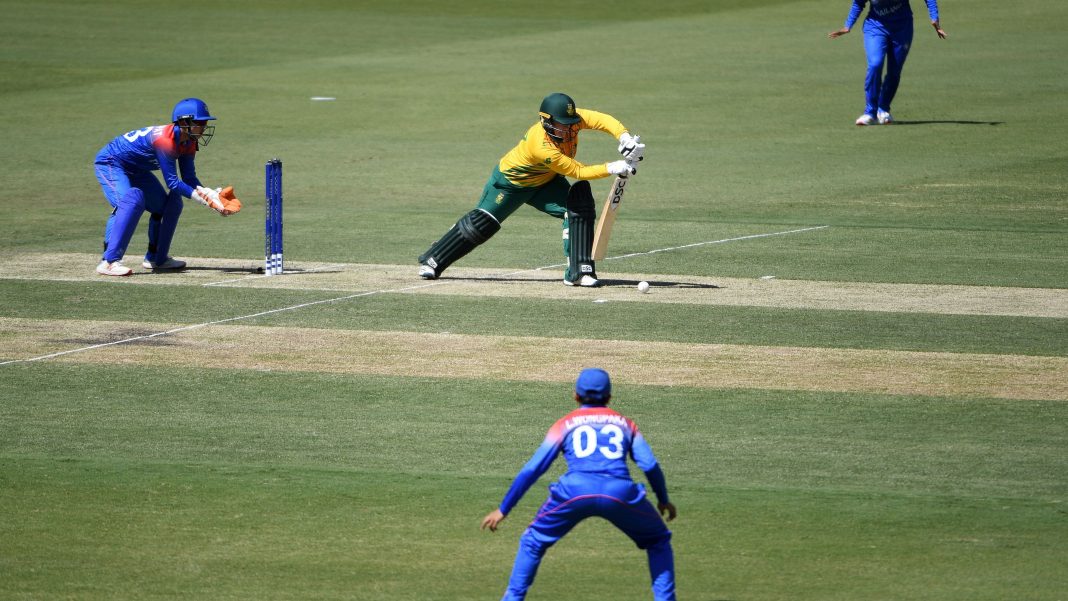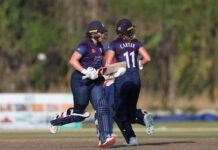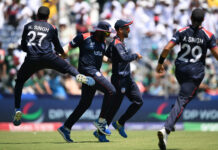T20 World Cup – 5th Match, Group B: South Africa 195/3 (Lee 101, Luus 61*; Padunglerd 1/19) defeated Thailand 82 off 19.1 overs (Kamchomphu 26; Ismail 3/8, Luus 3/15) by 113 runs in Canberra.
It was a case of deja vu for Thailand as they struck early then failed to contain a top-order batter for the second time in a row in Canberra, succumbing to a powerful South Africa side by 113 runs.
Following England Captain Heather Knight’s 108 not out earlier in the week, South African opener Lizelle Lee struck 101 off a mere 60 balls to leave the T20 World Cup’s only Associate representatives reeling.
With the bat, the Thais struggled to deal with the searing pace of Shabnim Ismail, and despite batting 19 overs, ended on a sub-par score of 82 all out on a true Manuka Oval wicket.
Just like their match against England, Thailand started with an early wicket. Star opener Dane van Niekerk was through her shot too quickly against Ratanaporn Padunglerd, scooping a simple catch to Natthakan Chantham at short mid-on for a spark of hope.
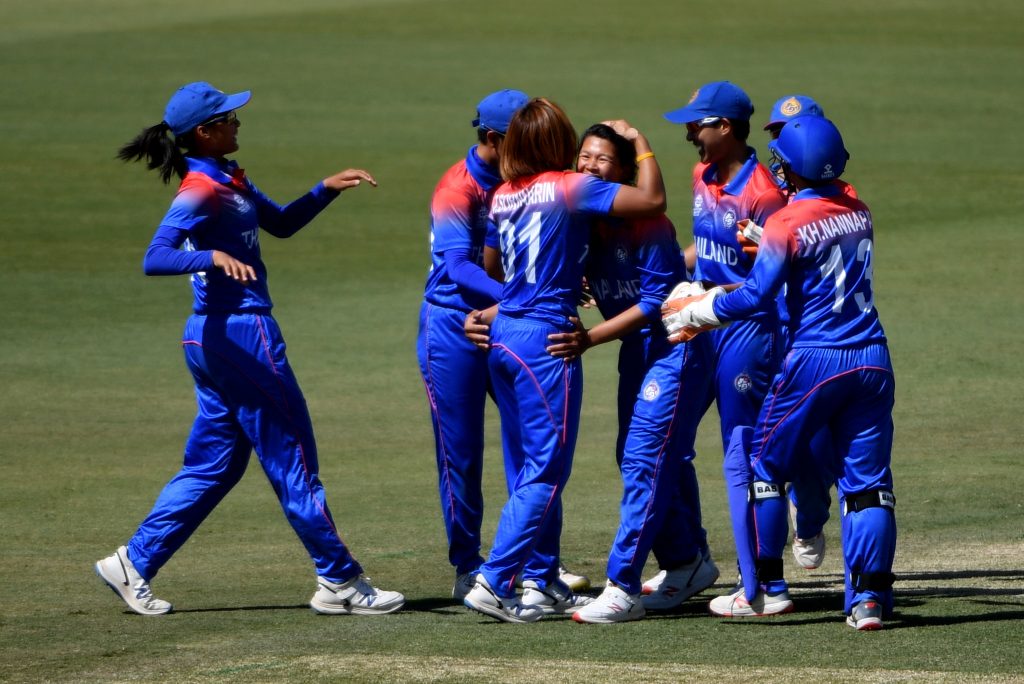
The spark was quickly snuffed out, however, as Lizelle Lee ended a run of nine innings without a fifty in emphatic style, while Sune Luus provided steady support at the other end.
Thailand were efficient through the first ten overs, containing the South Africans to 65 runs. From that point on, Lee and Luus took the Thai attack to task, scoring 136 runs in the last ten overs. Lee, a powerful striker of the ball, scored 82 of her 101 runs in boundaries, peppering the midwicket and extra cover regions despite the best efforts of the Thai fielders.
Skipper Sornnarin Tippoch, usually so proactive in adjusting her field looked shell shocked at the onslaught, as the bowlers repeatedly allowed Lee and Luus to cash in on loose deliveries.
There were flashes of brilliance from Thailand. Suleeporn Laomi was again always in the game with her leg-spin and accounted for Lee caught-and-bowled with a clever change of pace.
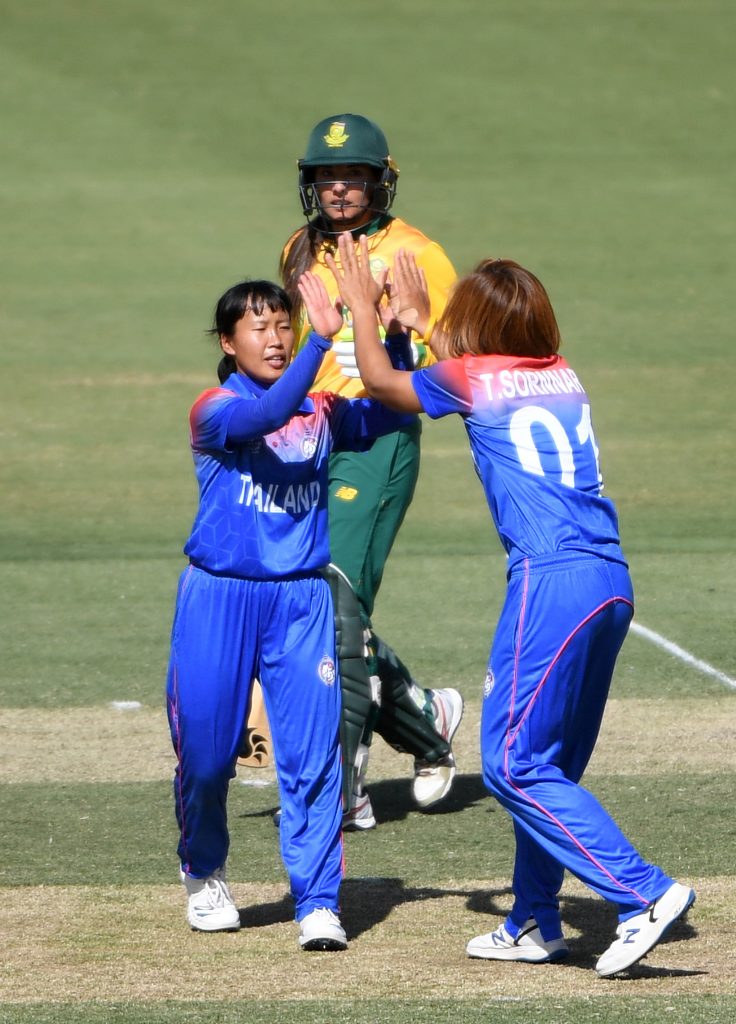
With the bat, Onnicha Kamchomphu hit a nonchalant 26 in the middle order at a strike rate of 123.80. She also hit Thailand’s first six of the tournament with a huge slog sweep over midwicket off Dane van Niekerk. During her stay at the crease, Thailand scored thirty runs in less than five overs for the loss of no wicket.
But the damage was already done, with Shabnim Ismail on the cusp of a hattrick in the 4th over as she reduced the Thais to 3-15. Tippoch blocked out the hattrick ball, but by the end of the power play, Thailand slipped further to 4-15 and the chase was all but over.
The Thais will at least be encouraged by the fact they recovered well to post their highest total of the tournament. They know they can improve from here.
But where did Thailand go wrong?
Overall, their struggle stemmed from not supporting each other well enough. Just as, when Thailand are at their best, the fielding and bowling feed off one another to improve both, against South Africa mistakes in both disciplines compounded each other – while let-offs in the field undercut the efforts of the bowlers, the wayward deliveries meant that fielders were often in the wrong place for the shots being played. Tippoch acknowledged this effect when quizzed about her field placements:
“We try to back our bowlers with setting the field, but the bowlers didn’t really bowl to their field, so in that respect, it didn’t go our way.”
For a team that relies on performing as a cohesive, disciplined unit and building pressure, that’s fatal. Far too often, a full toss or a half-tracker followed four good balls. Far too often a fifteen-run over followed a decent one. It is hard to know whether these lapses are a result of nerves or an inability to adjust to the smaller margins of error required to succeed at this level. Probably a bit of both.
The same principle also applies to the quality of fielding. Although there were a number of fine efforts from Naruemol Chaiwai (deep mid-wicket) and Suleeporn Laomi (point), the speed at which the ball travelled on the outfield appeared to trouble the Thai fielders. They were forced to run harder, get down faster, expect the ball in their hands a fraction quicker, and throw flatter. South Africa’s batters are some of the hardest hitters in the game. They also took on the Thai outfielders’ arms more than once.
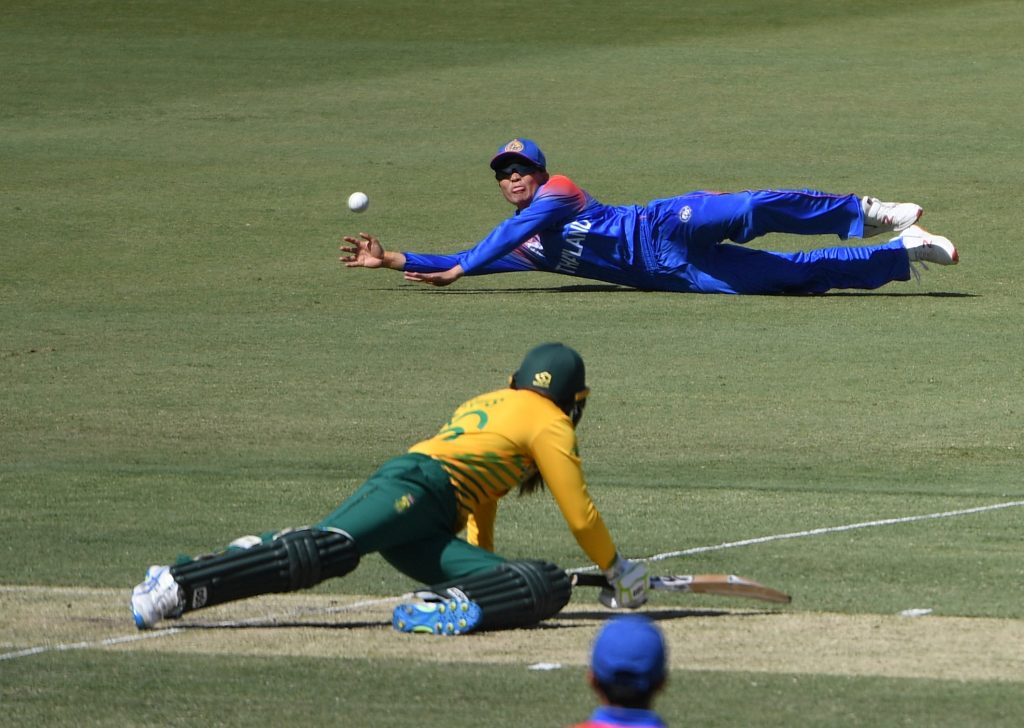
Reflecting in the post-match press conference, Tippoch recognised the need to address this issue:
“We’ve got to accept if we’re going to play at this level, teams are going to come at us hard and we’ve gotta step up our game in that respect, improve our fielding and be a bit more brave.” Tippoch said.
As a comparison, when Ismail opened the bowling for South Africa, Dane van Niekerk lined up a 7-2 offside field – a bold ploy in the powerplay of a T20, but an effective one against the Thai offside game precisely because the South African captain knew she could trust in Ismail’s ability to bowl to that field.
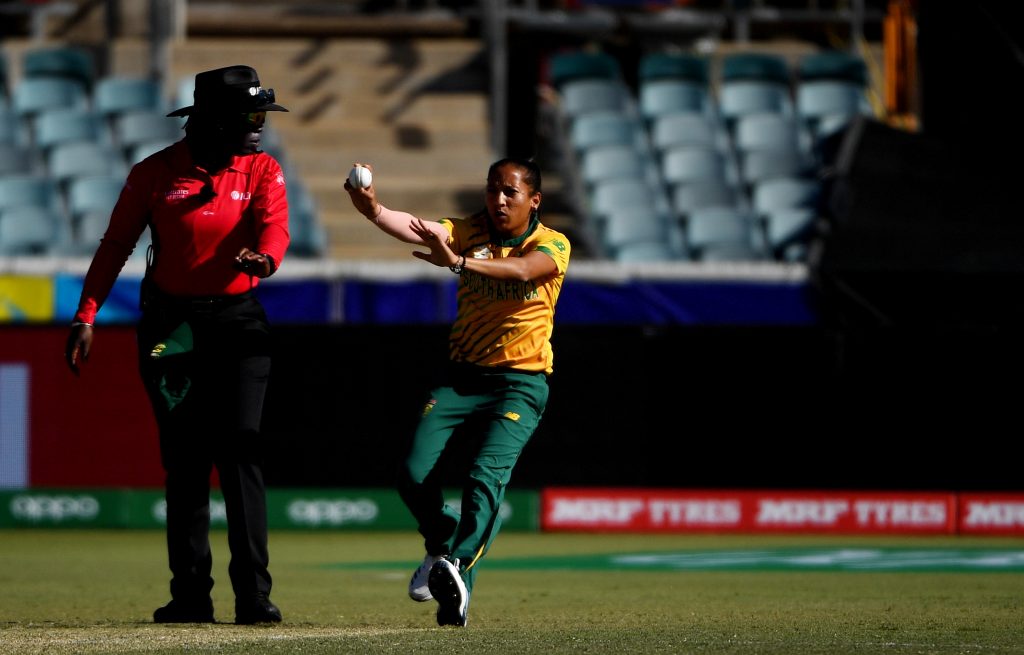
And while Thailand still has a lot of work to put in before they can truly challenge at World Cup level, at the press conference van Niekerk was effusive in her praise for the spirited brand of cricket they have already brought to the tournament:
“Coming up against a team like that, it just takes you back to why you started playing the game and why you actually really love the game.” Van Niekerk said.

